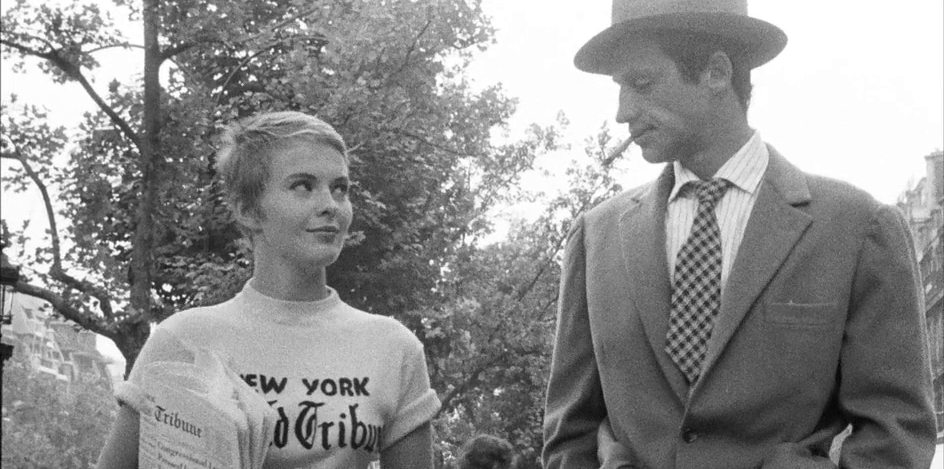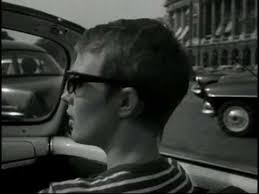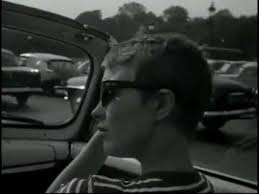Breathless (1960, dir. Jean-Luc Godard) is a very influential film, and is an example of French New Wave cinema. At this point in time, there were cinema conventions established by Hollywood. Movies made during the French New Wave era typically didn’t follow these conventions. For example, in Breathless, there are lots of scenes where the characters have meaningless conversations.

These scenes were sometimes improvised by the actors, and give the film a more natural feel to it. This is different from the mainstream films that were being produced at the time, where everything was very scripted. Audiences were getting bored with these films, which is why films such as Breathless and the French New Wave movement were so successful. These improvised scenes often were made up of long shots and deep focus shots. This allows the audience to interpret the scene how they want, and adds to the more naturalistic feel that it has.
Godard also uses a number of jump cuts in some scenes in Breathless. These shots look unnatural, as they are only slightly different from the previous one. The jump cuts suggest that time has passed since the previous shot, but as Patricia is in the same position it seems unusual.


Godard used methods like these in Breathless to remind the audience that they were actually watching a film, and that the scenes weren’t real. This distances the viewer from the story and the characters within it. These shots also seem unusual because while the image is changing and apparently showing different points in time, Michel talks continuously over the top. One other reason for the seemingly random jump cuts was because Godard was told to make the film shorter. This led him to cut parts of scenes out, making them feel like there were parts missing. The jump cuts weren’t originally intended during filming, but Godard’s style later was called innovative.
One feature of French New Wave Cinema is an emphasis on having realistic mise-en-scene. Breathless was filmed in real locations, and had no sets constructed for it. This led to the film having a very naturalistic look and feel to it. Godard’s decision to film in this way led to the film presenting a more realistic view of the world, rather than it being over-stylised, which previous films were.

The final scene of the movie was shot in a real Paris street, rather than constructing a set. This saved the crew precious time and money, as they had a relatively low budget. Again, this is what makes Breathless different from other mainstream films, as elaborate sets weren’t needed. In addition, the ending of the film is different from what audiences would have expected to see. During the ‘golden age of Hollywood’, audiences had become used to films where the protagonist was a hero and makes the right decisions. However, Michel dies at the end of Breathless, changing the expectation for the protagonist to survive, and for them to always be the hero.
Breathless was Godard’s first film. Before he became a director, he wrote for a magazine called Cahiers du Cinéma, which analysed and criticised films. Through this magazine, which he co-wrote with François Truffaut, he developed the auteur theory which suggests that the director of a film is the real writer, rather than the person who wrote the screenplay. This is because elements such as camera placement and lighting are chosen by the director, and convey the main message of the film. This could be why Breathless has such a personal and everyday feel to it, because Godard focused on using mainly the mise-en-scene to tell the story.
Godard’s style can be seen in modern-day movies, as his influence has reached a lot of mainstream cinema. For example, Pulp Fiction (dir. Quentin Tarintino, 1994) uses lots of seemingly random cuts, which is a style of Godard’s. This editing adds tension and action to the scenes. Also, some scenes in Pulp Fiction are random and not important to the whole plot, for example when two characters are talking. This adds a sense of verisimilitude to the film, and is something that was developed in French New Wave cinema.
